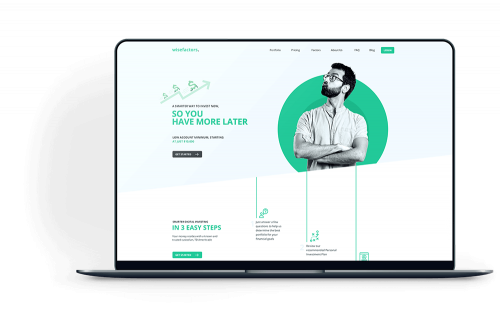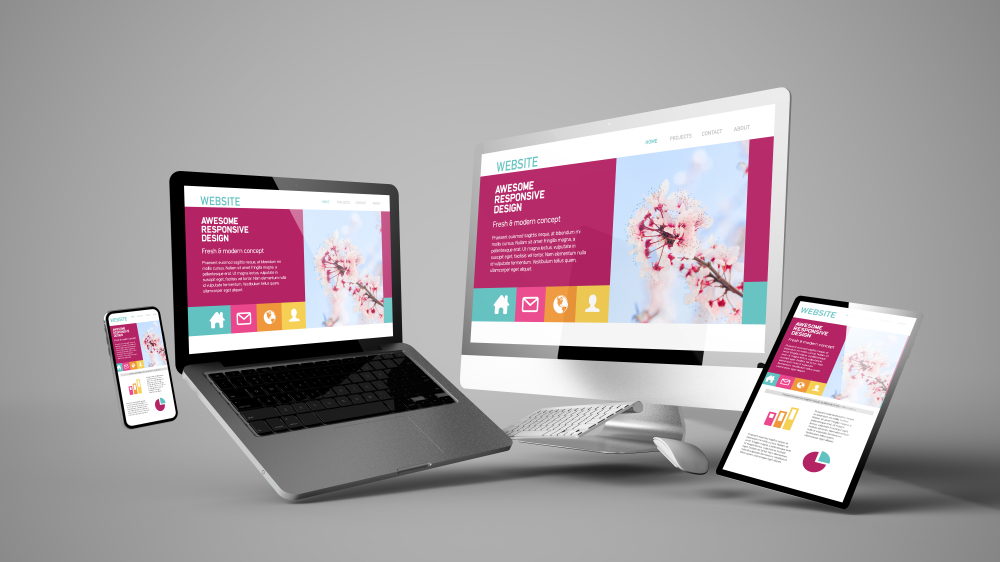The Ultimate Overview to Modern Website Layout Trends
In the ever-evolving digital landscape, modern-day site design patterns play a critical duty in forming individual experience and involvement. From the surge of minimalist design concepts that focus on simpleness to the influence of vibrant typography in defining brand identity, each aspect contributes to a cohesive on the internet existence.
Minimalist Style Principles
Minimal layout concepts highlight the concept that less is much more, advocating for simpleness and capability in visual communication. This strategy strips away unneeded elements, concentrating instead on important elements that convey the intended message properly. By prioritizing clarity, minimalist layout improves individual experience, allowing site visitors to navigate web sites easily.
Core tenets of minimalist layout include making use of enough white area, which develops a sense of balance and company. This unfavorable space not only directs the customer's interest to crucial elements but also promotes a relaxing aesthetic ambience. Additionally, a limited color scheme is often used, making use of soft shades or monochromatic systems to maintain aesthetic cohesion and prevent frustrating the user.
Typography plays a vital duty in minimal design, where clear font styles are picked for their simpleness and effectiveness in connecting material. Pictures and graphics are conserved, making certain that they serve a purpose rather than distract from the total message. Inevitably, minimal style concepts grow a focused atmosphere that encourages customers to engage with the material, boosting the general performance of contemporary web site design. This fad shows a growing recognition for thoughtful, user-centric looks in digital rooms.
Bold Typography Options
Welcoming bold typography selections has actually become a defining feature of modern-day web site design, as it properly records attention and shares solid messaging. Developers are increasingly utilizing typography not just as a functional element yet as an essential visual element that boosts the overall aesthetic and user experience.

In addition, the association of bold typography with minimal design concepts permits striking contrasts, boosting readability while preserving aesthetic charm. The usage of whitespace around bold message even more stresses its value, ensuring that the message resonates with the target market.
As digital landscapes end up being much more affordable, leveraging vibrant typography allows brand names to separate themselves and leave a lasting impact. The cautious option of font styles and their application can evoke feelings, develop tone, and drive action, making bold typography an indispensable device in contemporary internet site layout. Eventually, it is a powerful way to boost narration and ensure that key messages are not only seen but also really felt.
Mobile-first and receptive Style
Mobile-first and responsive design has become a critical principle in contemporary website advancement, showing the raising dependence on mobile phones for accessing online material. As individual behavior changes towards mobile browsing, designers must focus on producing experiences that adapt flawlessly across different screen sizes and resolutions.
A responsive layout ensures that an internet site instantly adjusts its format, images, and functionality based on the device being utilized. Mobile-first style supporters for creating sites originally for smaller screens, subsequently scaling up to larger display screens.
Executing receptive and mobile-first principles not just satisfies customer preferences yet additionally lines up with search engine optimization (SEO) techniques. Significant online search engine, like Google, focus on mobile-friendly internet sites in their rankings, making it important for organizations to embrace these style approaches. In a competitive digital landscape, accepting mobile-first and responsive style is not just a choice; it is crucial for making certain availability and engagement with a diverse target market.
Engaging Microinteractions
Microinteractions play an essential role in boosting user interaction and overall website experience, especially in the context of mobile-first and receptive style. These subtle design elements provide prompt feedback to individuals, making interactions a lot more instinctive and satisfying. Instances include switch computer animations, notification alerts, and loading signs, which not only overview customers however likewise produce a sense of link with the interface.
Incorporating appealing microinteractions can considerably improve use by decreasing cognitive tons. When customers receive auditory or visual responses upon doing activities, such as clicking a switch or submitting a kind, they feel a lot more positive in their choices. This cultivates a smoother navigating experience, ultimately enhancing customer retention.

As web site design fads proceed to develop, the relevance of microinteractions can not be overemphasized. They function as the subtle yet powerful touchpoints that change ordinary communications right into amazing experiences, therefore elevating the overall efficiency of modern-day internet layout.
Sustainable Web Style Practices
Sustainable internet style techniques are coming to be progressively vital as the digital landscape grows and ecological worries climb. Developers and designers are recognizing their duty to develop web sites that not just offer customer requirements but additionally reduce ecological effect. This technique includes numerous crucial methods.
Firstly, optimizing energy usage is vital. Internet sites should be designed to pack swiftly and efficiently, which reduces server power usage and enhances customer experience. Strategies such as photo compression, lessening HTTP demands, and making use of contemporary coding techniques add substantially to this goal.
Secondly, picking green holding carriers is crucial - website design. Lots of hosting companies are now powered by renewable resource sources, making it possible for websites to operate in a more lasting manner. This option reflects a dedication to decreasing carbon footprints
In addition, taking on a minimal design can enhance sustainability. Fewer components on a web page lead to less data transfer, which not only quickens loading times but likewise conserves resources.
Last but not least, promoting electronic ease of access makes sure that sites reach a wider audience without unneeded bloat, lining up customer experience with environmental responsibility. By incorporating these sustainable techniques, internet developers can contribute favorably to both user engagement and the world's wellness.
Verdict
In summary, contemporary internet site design trends emphasize the combination of minimalist principles, bold typography, and receptive layout to enhance user experience. Embracing these patterns is vital for developing impactful digital experiences that resonate with customers in a significantly affordable online landscape.
In the ever-evolving electronic landscape, modern-day internet site style fads play an essential role in forming individual experience and involvement. By focusing on quality, minimalist style boosts customer experience, allowing visitors to browse web sites easily.
Ultimately, minimalist style principles published here cultivate a focused setting that motivates users to engage with the material, boosting the general performance of contemporary internet site style.Microinteractions play a crucial role in boosting individual involvement and total internet site experience, especially in the context of mobile-first my blog and responsive design.In recap, modern web site layout trends emphasize the combination of minimalist principles, bold typography, and responsive design to boost individual experience.